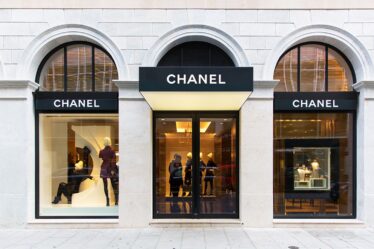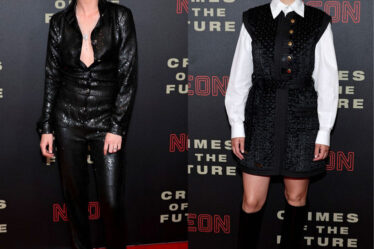
Hellen Moffitt had always loved the idea of renting clothes.
For a while, she had a subscription to Rent the Runway. But it was pricey for a recent college grad, she said, and the selection was a little too formal for her casual lifestyle in Charlotte, North Carolina. Plus, with shipments coming from out of state, the speed was sometimes frustrating, Moffitt added, and so she looked for a local alternative.
Finding none, Moffitt decided to start her own, Ponybox, in 2020.
Users rent items for $15 to $30 per piece, typically from small wholesale brands, which they can hold onto for a week or two. Since its launch, Ponybox has had over 2,000 customers (each rental is a one-off; the company does not offer subscriptions). It’s a fraction of the size of Rent the Runway, which boasts more than 2.5 million users. But Ponybox has outdone the rental giant by one key metric: as of this month, it’s fully profitable.
Running a fashion rental service isn’t easy. These companies have all the usual challenges of a retailer — stocking the right inventory at the right price point, marketing and customer service. But they’re also in the business of reverse logistics, the industry term for when a customer sends an item back to the seller. Most retailers try to minimise returns, which are complicated to process and restock; success for a rental service means accepting, cleaning and shipping back out as many items as their warehouses can handle.
Rent the Runway, one of the first and still the biggest rental service, posted a net loss of $76.4 million in the six months ending in July on revenue of $131.4 million. Since going public a year ago, the value of its stock has fallen more than 90 percent. In contrast with resale, consumers have been slow to embrace rental; Rent the Runway has about 124,000 active subscribers. Poshmark alone has 8 million active buyers.
But Rent the Runway counts as a success in the category: occasionwear rental service Armarium, menswear rental company Seasons and peer-to-peer rental company Villageluxe have all closed down in the last two years.
Even so, new entrants keep pilling into the market, betting their twist on the formula will solve the category’s problems. B2B company Caastle, for instance, works with 150 brands to enable rental on some capacity, including operating rental services for Maje and Scotch & Soda. Vivrelle, a luxury handbag and jewellery rental start-up, raised $35 million from investors last week.
The proposition behind all of these businesses remains unchanged from a decade ago: convince enough people to rent clothes instead of buying them, and the math behind shipping, stocking and cleaning countless dresses or handbags will start to make sense. While growth hasn’t always lived up to these companies’ forecasts, there are signs that wider adoption may be happening: Urban Outfitters’ rental service, Nuuly, has doubled its subscribers this year, to north of 100,000, according to Dave Hayne, the retailer’s chief technology officer and Nuuly’s president.
“If you think about rental 10 years ago, it was a behaviour that no one had adopted,” said Jenn Hyman, co-founder and chief executive of Rent the Runway. “Today, [millions] of women have interacted with it in some way.”
One Size Does Not Fit All
The first wave of rental services billed themselves as substitutes for their customers’ entire closets. Rent the Runway, Le Tote and others promised to dress their customers for the office, a destination wedding or the club.
These days, rental services are targeting niches, some with more success than others. Moffitt attributes Ponybox’s profitability to its hyper-local approach: the company only rents to customers within a 10-mile radius of downtown Charlotte, with deliveries often handled by Moffitt herself.
UK-based Hurr has found that consumers are more likely to experiment with the rental through borrowing for one-off occasions rather than a full subscription. There’s also men’s suiting rental service Black Tux, and Illinois-based Saris and Things offers rental for Indian formal attire.
Everyday dressing, however, remains the bread-and-butter for Rent the Runway, which generates 80 percent of its revenue from monthly subscribers. Customers for its one-off segment, called Reserve, as well as those who shop resale on Rent the Runway, account for the rest of sales.
For big retailers, rental has become a way, often side-by-side with resale, to target customers who may not be ready to shop full-price.
Vince, which launched its rental service Unfold with Caastle in 2018, has demonstrated that rental creates a pipeline of new, younger customers who’ll buy retail down the line. Among Rent the Runway customers, too, 80 percent end up buying from a brand that they discovered on the platform.
With uncertain market conditions seeping into 2023, some believe rental might be relatively recession-proof.
“We hear from our customers that our value proposition is very attractive,” said Hayne of Nuuly, which charges $88 a month for a six-piece subscription. “How that carries into a potential recession, I feel pretty good about.”
Accessories for the Win
When Vivrelle launched in 2018, it was one of few rental services in the US market to offer users high-end handbags from brands like Chanel, Gucci and Prada. Vivrelle doesn’t work with these brands directly. Still, the value proposition is undeniable. A standard subscription costs $99 a month and allows customers to rent one bag at a time, though the entry-level membership costs $39 per month.
In Europe, Cocoon provides a similar service, charging £79 for access to one bag per month from brands like Saint Laurent or per month. Last year, Kering invested in the company, which raised a total of £2.5 million.
Luxury leather goods and fine jewellery require a steep upfront investment. But bags and earrings can be rented out many more times than dresses or slacks because they hold up better after multiple wears, according to Wayne Geffen, who founded Vivrelle alongside his wife Blake in 2018.
Vivrelle and Cocoon also don’t have to spend millions on cleaning facilities and assembly lines the way that fashion rentals do; prepping a tote bag for its next rental is much simpler than removing red wine from a dress.
Apparel-driven services are taking heed; Vince Unfold is rolling out more products in the accessories space for renters.
The Power of Resale
Once the competition, resale has become an important outlet for rental services.
In recent years, Rent the Runway has expanded its resale offering, partnering with Saks Off Fifth to supply the off-price chain with formerly rented merchandise.
“The retailer of the future is going to offer ultimate choice and flexibility to the customer, whether she wants to buy it new, buy it secondhand, rent it a la carte or use it as part of her rental subscription,” said Hyman. “Resale for us is giving her that choice.”
Nuuly also launched a resale vertical last year. Nuuly Thrift allows the retailer to liquidate rental-worn pieces and users to list their own secondhand items as well.
For Ponybox, hosting periodical consignment sales has become a major marketing strategy and helps with cash flow, Moffitt said. The company is preparing to open a vintage consignment store next door to its rental outpost.
“Since launching thrift, we’ve tapped into a new customer base — the college age girls who are into secondhand fashion, but we’re training them on the rental thing too,” said Moffitt.
Making the Logistics Work
For rental companies, nothing matters if the logistics aren’t there to support customers and their selection.
Rent the Runway angered customers in 2019 when a warehouse software update resulted in hundreds of cancelled or delayed orders. The following year, it got rid of its popular $159 unlimited programme, where customers can swap out pieces as many times as they’d like per month. A new tiered membership now charges $144 per month for eight pieces and $235 for 16. There’s also a four-piece membership that costs $69, and users of any plan can add on additional spots.
Much of Rent the Runway’s distribution capacity is now automated; machines that automatically identify what sort of cleaning returned items need and using RFID to track every item’s location and status.
Caastle still offers unlimited swaps for members, but on the retailer’s terms. The platform encourages users to select at least six to 10 items at any given time and packs each order from this “closet.”
“We run a matching algorithm that says you have these things in your closet and someone else has these 10 things in their closet, how can I most intelligently allocate the inventory if we want some of the same stuff?” said Christine Hunsicker, founder of and chief executive of Caastle.
Rental companies are also cutting down on shipping costs by taking delivery in house rather than exclusively working with traditional carriers. Moffitt said traditional carriers charge twice as much compared to packing and delivering rental orders herself.
Rent the Runway has found that delivery startups such as Veho and Returnmates can help save on costs of shipping. They’re also more convenient for customers, who can schedule at-home pickups for returns.
Ultimately, rental’s biggest opportunity, whether for growth or for driving the bottom line, lies in improving logistics. Pinpointing out what products to invest in, how much of it to buy and how to get it to the customer should be a constant work in progress.
“Bootstrapping rental is really, really hard,” Moffitt said. “One of our biggest challenges is figuring out how much inventory to hold.”
Still, she added, “rental is the future.” Looking ahead, she hopes to launch Ponybox in other small but emerging cities in the Southeast US, such as Nashville or Austin.



